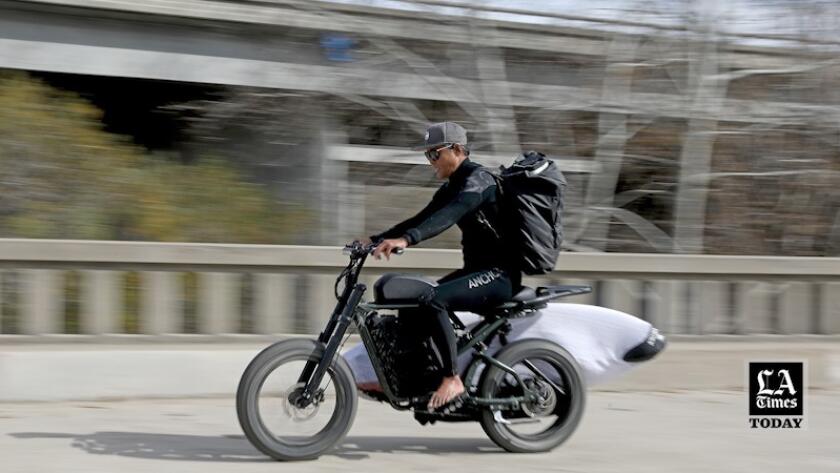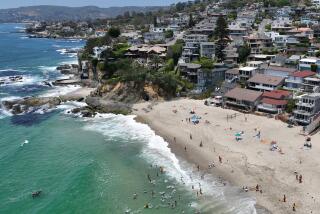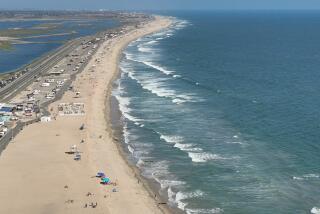On Orange County beaches, proliferation of e-bikes brings battle to the boardwalk
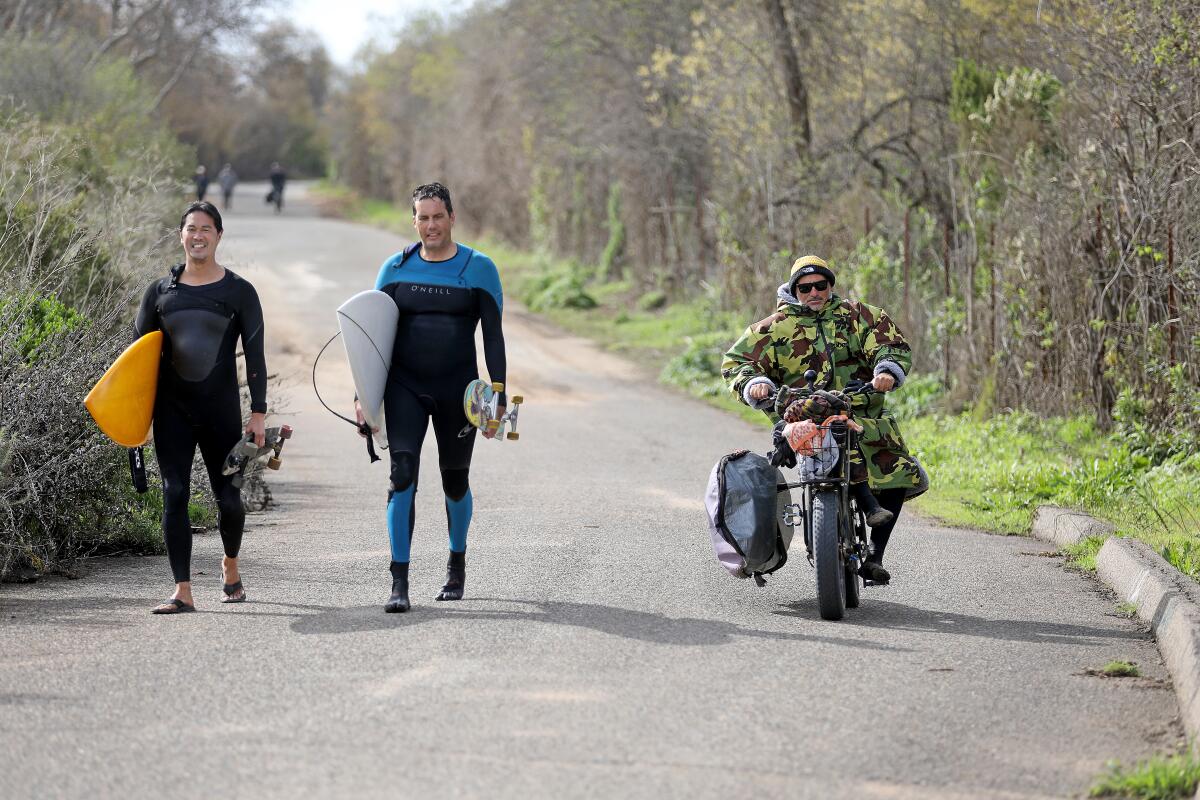
When Fred Levine steps off the patio of his beachfront home onto the crowded boardwalk, a roughly three-mile pathway that stretches parallel to the sand along the Balboa Peninsula in Newport Beach, he has to remember to look both ways.
“It’s like stepping onto the 405 Freeway,” he said.
Three decades ago, Levine moved to what some refer to as the city’s “war zone,” a nickname given not because of crime but for the reputation of summertime rowdiness along the boardwalk, which now includes an abundance of electric bicycles. The strip’s 8 mph speed limit means nothing to some of these people, he said.
He’s watched people get mowed down, dogs hit and too many near misses to count, he said. City leaders for years have studied how to manage the proliferation of e-bikes along the route but have stopped short of banning them.
“What we’re witnessing on the boardwalk is mayhem,” Maureen Cotton, president of the Central Newport Beach Community Assn., told the City Council during a meeting urging officials to address e-bikes last year.
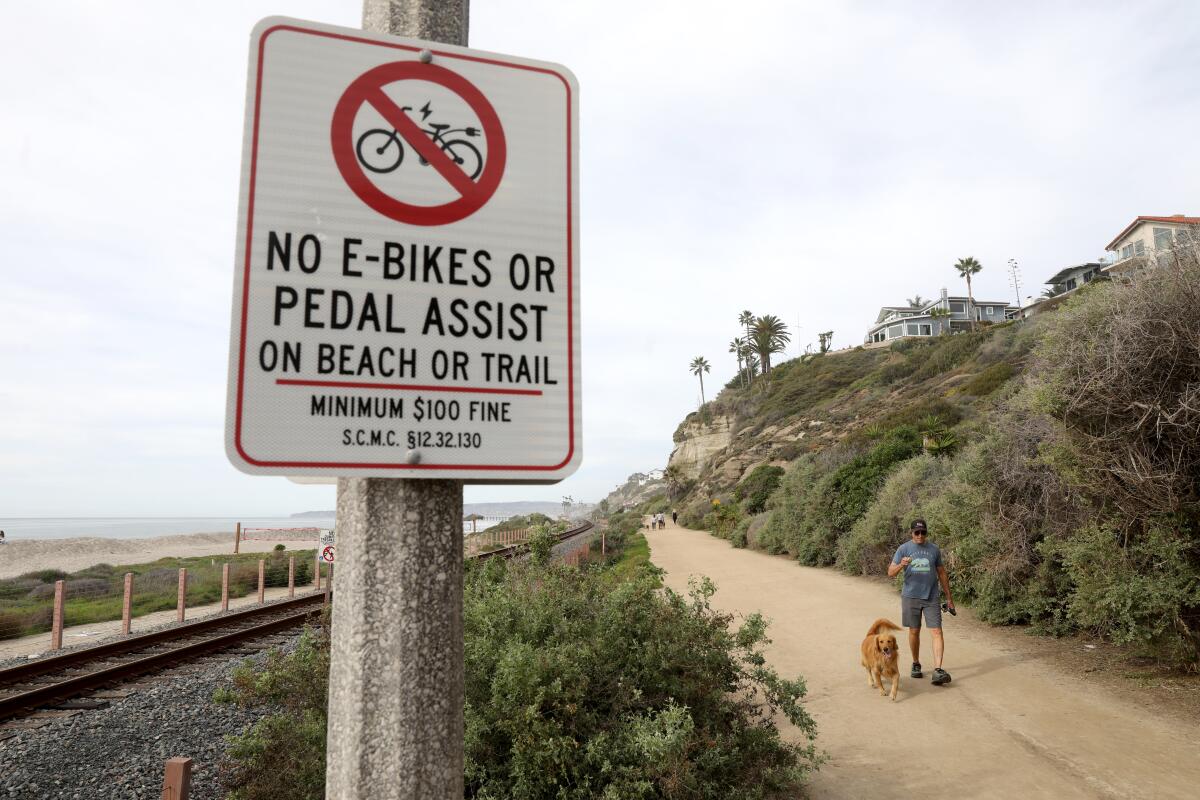
Although electric bicycles have been around for years, their popularity swelled during the pandemic, when gyms were shut down and people were looking for alternative forms of exercise and recreation.
Their popularity has created a conundrum for Orange County cities as they attempt to balance state climate goals that necessitate getting people out of gas-fueled cars with concerns about rider and pedestrian safety. The maximum speed most e-bikes can reach is 20 mph. However, some models can reach 28 mph or higher.
Other California beach towns are grappling with the proliferation of e-bikes and safety issues. In San Diego, officials responded by banning e-bike use along beach boardwalks. In Los Angeles County, some cities, including Manhattan Beach and Hermosa Beach, have opted to restrict them on their beach paths.
In Orange County, injuries involving e-bikes have risen steadily since 2020.
The California Air Resources Board has released its long-awaited scoping plan, a roadmap for the state to drastically cut its carbon emissions.
During the first 10 months of last year, staffers at Providence Mission Hospital in Mission Viejo documented 198 e-bike injuries. Doctors saw 113 injuries in 2021 and just 34 in 2020, according to data provided by the hospital.
Between January and October of last year, 78 of the 198 people who suffered an injury on an e-bike were not wearing helmets and 99 suffered some type of head injury, data show.
“My feeling about the whole situation with e-bikes is that we got a device a little bit too fast, and the culture is not completely set for it,” said Tetsuya Takeuchi, the trauma medical director at Providence Mission Hospital. “It’s a convenient vehicle, it’s environmentally friendly — there’s a lot of advantages. But we need to think about the safety of the rider and the safety of the people around them.”
E-bikes have a diverse group of supporters, including parents looking for a convenient way to get their kids to school and Orange County’s tourism industry, which advertises them as an ideal way to see the coastline.
Electric bicycles range in price from about $1,000 for basic models to more than $5,000, depending on the brand, design and power.
E-bikes fall into one of three categories under state law. Type 1 is a low-speed pedal-assisted bicycle. Type 2 has a pedal and a throttle. Type 3 bikes can go faster — up to 28 mph — with pedal assistance and riders have to be at least 16 years old and wear a helmet.
The state allocated $10 million for the California Air Resources Board to help establish a rebate program to make them more affordable.
The program, which launches this year, gives applicants who meet certain income requirements a voucher of up to $750 for a regular e-bike and up to $1,500 for a cargo or adaptive e-bike.
In Orange County’s affluent coastal communities, where the bikes are already mainstream, officials worry the increase in injuries they’ve seen in recent years could be a bellwether of issues to come for the rest of the state.
At CHOC, a children’s hospital in Orange County, doctors treated 47 trauma patients who suffered e-bike-related injuries last year, with the most common ailments being concussions, bone fractures, skull fractures and facial fractures, said Makenzie Ferguson, an injury prevention coordinator at the hospital.
In May, fewer than half of those treated were wearing a helmet at the time of their injury, she said.
“It’s up a little bit more recently, but there’s still a lot of kids not wearing helmets,” Ferguson said. “One of the things we always try to educate our families on is to mirror good practices. If an adult isn’t wearing a helmet when they’re riding an e-bike, most likely their kids aren’t going to either.”
San Clemente city officials early last year banned electric bikes from their coastal boardwalk after months of complaints from residents who say they witnessed crashes, speeding and other reckless behavior from people riding e-bikes.
Signs posted along the unpaved path that runs alongside the coastal railroad tracks in the city warn of a $100 fine for using an electric or pedal-assisted bike on the beach or trail.
Watch L.A. Times Today at 7 p.m. on Spectrum News 1 on Channel 1 or live stream on the Spectrum News App. Palos Verdes Peninsula and Orange County viewers can watch on Cox Systems on channel 99.
On a recent Sunday afternoon, a few bikers ignored the rule. Others, like 62-year-old Max Jones, whose electric bike was parked next to him as he relaxed on the sand near the pier, say they use their e-bikes on the city streets to get to the ocean, but don’t use them on the trail.
“When I first saw the sign, I thought it was ridiculous,” he said, adding that although he dislikes the regulations on e-bikes, he blames the people who behaved badly and “ruined it for everyone.”
A few miles south at Trestles Beach, on the outskirts of San Clemente, e-bikes are not regulated and are used frequently by surfers lugging their boards down the trail from Cristianitos Road to the sand.
“It’s convenient to hop on your bike and blaze down the trail,” Scott Farnsworth, 57, of San Clemente said as he unloaded his surfboard from his van in the parking lot above Trestles. “I’m really cognizant of the safety concerns people have, but I do wish there was a better solution than banning them.”
Even after the prohibition along the beach trail, San Clemente officials are still looking at ways to improve e-bike safety across the city, Mayor Chris Duncan said. Ideas include adding more bike lanes and possibly enacting a training program.
“I’m just extraordinarily afraid that we’re going to have a major accident involving a child on an e-bike,” he said. “These are powerful devices and with the good benefits comes hazards we need to recognize.”
E-bike concerns have also crept into inland communities in south Orange County, where people of all ages use the bikes to help navigate the hilly terrain.
Lake Forest set e-bike speed limits of 10 mph on the street or 5 mph on sidewalks. In Aliso Viejo, e-bikers can ride up to only 5 mph on the sidewalk. The bikes can’t be used in commercial centers or city parking lots.
In Irvine, teens zipping past pedestrians on sidewalks at shopping centers, not wearing helmets and ignoring traffic laws, have caused consternation among neighbors.
In October, the Irvine City Council asked staff to look into potential regulations the city can enact for e-bikes. The Police Department has put on bike safety classes, high-visibility enforcement operations and discussions at schools to emphasize wearing helmets and obeying traffic laws, but they’re still studying what more can be done to regulate the bikes, Sgt. Karie Davies said.
“Parents are frequently uninformed about the class of e-bike that they’ve purchased for their kids and the requirements for being on those bikes,” she said. “We’re trying to keep up, but the e-bikes outnumber the officers we have.”
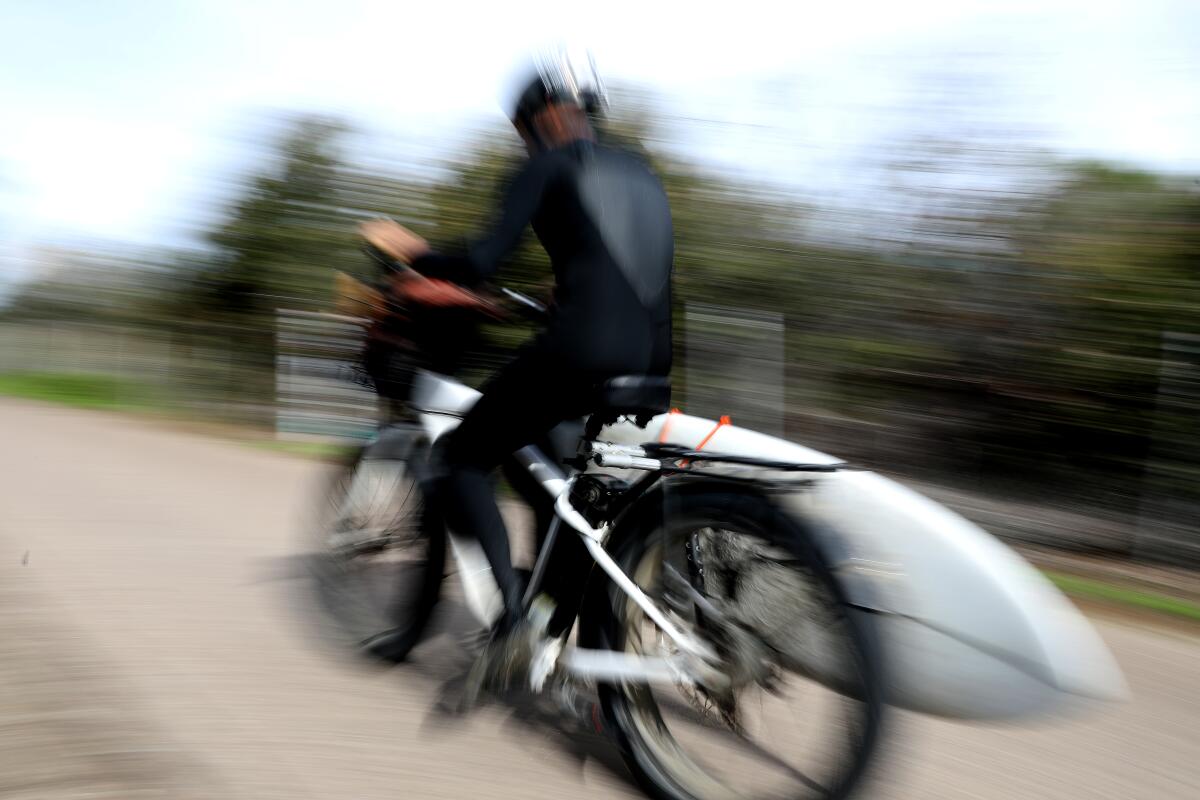
In Newport Beach, the city has tried to address speeding bikes with boardwalk ambassadors who are not police but patrol the boardwalks and piers to educate bicyclists. It’s an effort residents say doesn’t fix the problem.
“They tell them to slow down, but what is that going to do? They either slow down when they pass them or they give them the finger and move on,” Levine said. “If they really want to fix things, they need to write tickets and enforce the speed limit.”
More to Read
Sign up for Essential California
The most important California stories and recommendations in your inbox every morning.
You may occasionally receive promotional content from the Los Angeles Times.

